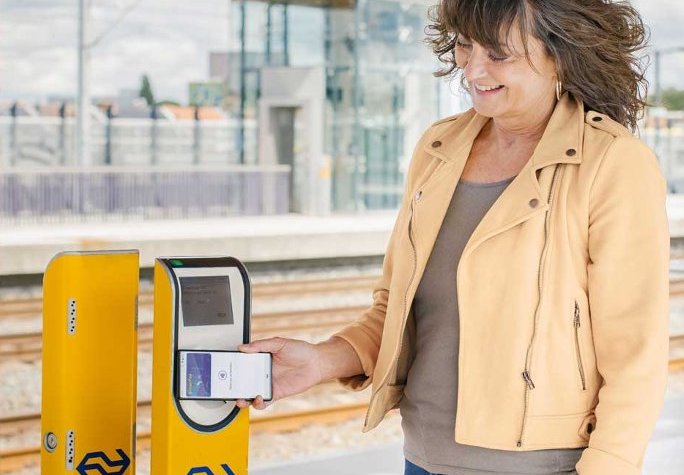In 2002, the OV-chipkaart was introduced in The Netherlands as a nationwide infrastructure for public transport payments. Ever since, it has been widely adopted: in 2019, before the COVID-19 pandemic, which affected the public transport massively, Translink Systems, the organization behind the OV-chipkaart, reported a total of 2.83 billion transactions and 15.3 million (against a population of 17.28 million (CBS, 2022)) smartcards in use (Translink Systems, 2020). This so-called “closed-loop” infrastructure that the OV-chipkaart uses dedicated smartcards that users can top up with funds. The major disadvantage of this: the funds remain on the card and are lost whenever the card is lost. Recently, the NS (Nationale Spoorwegen, or the Dutch National Railroads organization) announced the introduction of the OVpay testing program and accompanying OVpay bèta application. This new and popular method enables travelers to tap their contactless debit/credit card or Apple Pay, Google Pay, etc. enabled mobile phones on the already existing sensor-gates at all stations in the country. This brings many advantages to both travelers and the transport company. This new so-called “open-loop” infrastructure uses a “pay-as-you-go” method, which brings more flexibility. The traveler will always pay the lowest price because the fare is calculated after check-out. Before, the “OV-chipkaart” would deduct a certain amount from the card as a deposit and return the amount that was deducted too much after check-out. If one forgot to check-out, this whole amount had to be paid by the traveler; with OVpay this won’t be the case anymore. In addition, the compatibility with mobile payment methods means one less card in the traveler’s wallet, making the wallet even more obsolete.
For transport companies, benefits include minimal adjustments to the current infrastructure (NS only reported some sensor-gates not optimally working as of now), no more ticket machine investments, improved performance of stations and trains, and minimal adoption effort resulting in a higher customer satisfaction.
NS believes that the future lies with the “pay-as-you-go” system, which has already been adopted in major metropolitan areas such as New York, London, and Tokyo. When all the testing results in positive feedback, NS will slowly start replacing the “OV-chipkaart” with OVpay (Ocampo, 2020) (OVpay, 2022).
CBS. (2022, September 28). Bevolkingsteller. Opgehaald van Centraal Bureau voor Statistiek: https://www.cbs.nl/nl-nl/visualisaties/dashboard-bevolking/bevolkingsteller
Ocampo, S. Z. (2020, May 4). Contactless payment: the future of public transport. Opgehaald van Computop: https://computop.com/payment-insights/en/mobility-en/contactless-payment-the-future-of-public-transport/
OVpay. (2022). Opgehaald van OVpay: https://ovpay.nl/nl
Translink Systems. (2020, April 23). Translink ziet resultaten in 2019 verder verbeteren. Opgehaald van Translink: https://www.translink.nl/newspost/translink-ziet-resultaten-in-2019-verder-verbetere

